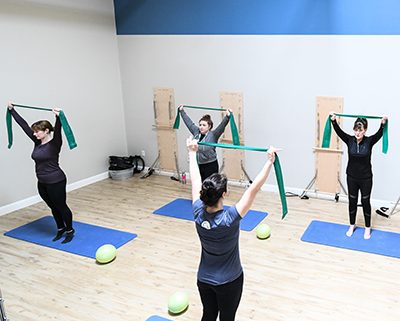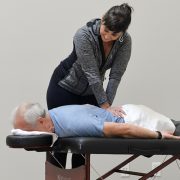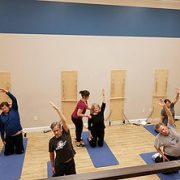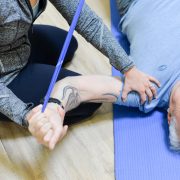Five Reasons People over 40 are doing Pilates
Recently, Pilates has been gaining popularity with folks over age 40. Why? Well, let’s take a look at the history.
It was first created by Joseph Pilates almost 100 years ago, who suffered from asthma, rickets, and rheumatic fever. When traditional exercise systems failed him, he turned to anatomy books and became obsessed with the human body. Refusing to let his body ailments define him, he eventually developed his own system of exercising, now known as the Pilates method. But the original name for his method was “Contrology,” because the focus of his exercises were to have full control of your movement and to feel empowered in your body.
I’ve been incorporating Pilates into my physical therapy practice for the last 11 years – and it’s been transformational for my clients.
Pilates is a full body strengthening system that emphasizes breath, precision, coordination, and core strength. It helps our clients connect to their bodies in a way they haven’t been able to achieve with traditional strengthening methods. Most of my clients are over the age of 40, and they love Pilates because it helps them have more energy, better balance, and improved strength and mobility. It allows them to participate in all the activities they love with more ease, and significantly decreases their likelihood of injury.
If you’re over 40, and aren’t yet doing Pilates, here are five reasons to get started:
1. Pilates helps prevent back pain.
Once you hit 40, your risk of back injury starts to climb. We see a lot of folks in our office who’ve tried traditional physical therapists, chiropractors, and so many kinds of core strengthening programs – but still have recurring back pain. Getting rid of back pain in the short-term is easy, but keeping it gone is the challenge.
We specialize in keeping pain gone, and Pilates helps us do that. Our Pilates instructors work closely with our PT team and get enhanced training on how to navigate back pain. We also keep our classes small so that we can pay close attention to everyone. This is key if you’re recovering from an injury and want to consider Pilates. Beware of classes that are overcrowded and not individualized. More than 5-6 people per class could be dangerous if you’re dealing with back pain. It’s impossible for your instructor to keep a close eye on you or give you individualized modifications.
2. Pilates strengthens your whole body, not just your core.
One of the keys to lifelong fitness is what I call “balanced strength.” In other words, each part of your body works together to produce the right amount of force, at the right time. I see lots of “strong” people in my office, but they can’t do the activities they love, because their muscles aren’t working together. Pilates emphasizes full body strength that is coordinated. Coordinated strength is essential to a balanced body.
3. Pilates improves your flexibility.
Do you stretch your hamstrings every day but they never seem to improve? It could be because you’re not stretching the right way. The great thing about Pilates is that it improves your flexibility in a way that strengthens at the same time. The “old school” way of stretching was to find the most uncomfortable position for your muscle and just hold it for 30 seconds. Research has shown this is not effective. The best way to stretch is to keep moving and do it dynamically. In Pilates, we do just that! One of the central concepts to Pilates is “lengthening.” This helps you stretch your muscles in a way that results in long lasting, sustainable improvements.
4. Pilates minimizes stress to your joints.
As we age, it’s normal to have arthritis. But it doesn’t have to be the death sentence to activity that most people think. The key to combating arthritis is maintaining a mobile and well balanced joint. When you optimize everything that surrounds your arthritic joints, your symptoms decrease. Pilates helps with all this – without causing any additional stress. Since Pilates is based on the idea of constant opposition – lengthening while strengthening – you end up with a joint that is happy and balanced. This helps to minimize the impacts of arthritis and even prevent the rate of degeneration as you age.
5. Pilates trains your nervous system.
Since Pilates emphasizes small, precise movements – it’s very good for your nervous system and coordination. We refer to this as motor control. Having good motor control is key for controlled, coordinated movement. A strong muscle that isn’t coordinated to “turn on” when it’s needed is almost useless. It’s why strong, healthy people still get back pain. Your core could be strong – but if it isn’t trained to function properly and when it’s supposed to – it won’t help you prevent back pain. When done properly, and with a qualified instructor, Pilates is one of the best exercise methods I’ve found to train your nervous system and improve motor control – which is key for injury prevention.










